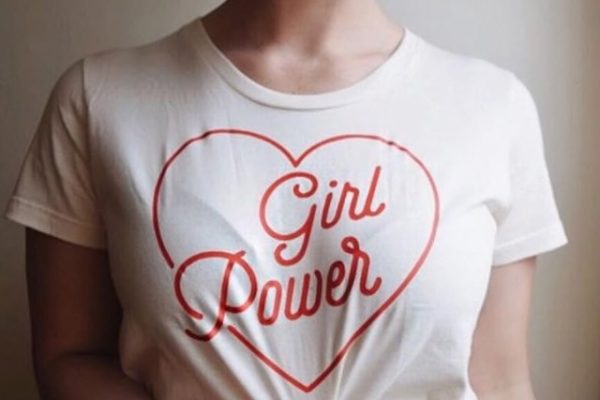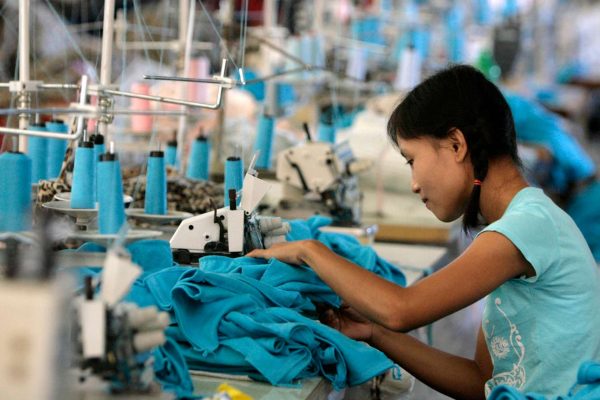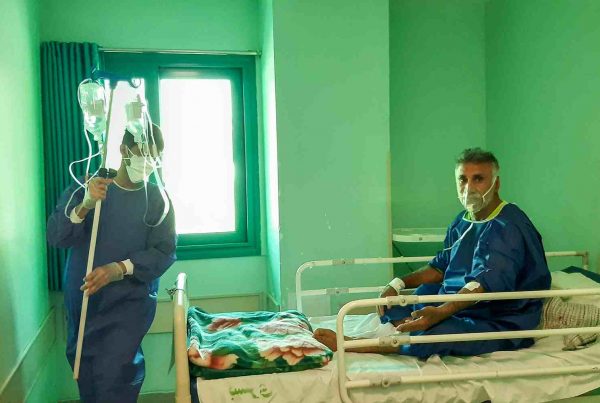Intersectionality (or intersectional feminism) is defined as “the complex, cumulative manner in which the effects of different forms of discrimination combine, overlap, or intersect” which essentially means you can not look at an oppressed group, and analyze the roots of their oppression focusing only on one aspect of their social and political identity such as race, gender, class, ethnicity, sexuality, disability, etc. Intersectionality was developed to defy “white feminism” (and its simplistic assumption that all women have the same experience of oppression as the western white woman), and is an analytic framework that explains how interlocking systems of power affect the marginalized groups in a society.
The theory of intersectionality was first developed in 1989 by Kimberle Crenshaw, a black feminist scholar who used the term to shed light on the additional oppression African-American women endure because of their race. Since then, intersectionality has been used in different context to address the interlocking matrix of oppression.
But the question remains, “is intersectionality enough if the only intersections we see are those that affect women in the west”? Arab-Australian writer Ruby Hamad challenges the application of intersectionality in today’s world, and how it is applied in a superficial and neoliberal manner that suggests oppression can be overcome through the actions of individuals. She thinks “while it may seem that intersectional feminism elevates all women no matter their background, closer inspection reveals it still relies on the continued hidden oppression of women (and men) elsewhere”.
To explain her point, she points to the big fashion companies such as H&M that on one hand represent diverse groups of women and girls (in terms of their sexuality, age, size and race) in their advertisements, and on the other hand exploit predominantly female labour in sweatshops in South Asia to produce their cheap diverse products. In another example, Hamad discuss this west-friendly intersectionality in the Middle East, where Marine Le Pen, the French ultra-right presidential hopeful went to see the Sunni Mufti of Lebanon, and despite knowing she will be asked to wear a veil, she waited until the very last second and when the cameras were rolling to declare she is not putting the veil on. Hamad describes this performance as “feminism in the aid of racism” which is not after freedom for women in the Middle East, but wants to put up a show for the audience in the west. She continues: “from deliberate plots to topple popular secular leaders, to the funding of authoritarian dictators and fundamentalist insurgents alike, the west has helped set the Middle East on this course of conflict, poverty, and religious fundamentalism”. Because the west consider the Middle East and the Global South as the periphery, including their women and their specific context into the intersectional feminist discourse would be irrelevant: “Any celebration of intersectional feminism that ignores this reality ends up looking like a performance of liberation rather than actual resistance. Intersectionality, as we practice it today, may be for all women — but only as long as they live in the west… It doesn’t matter how many diverse women are in our advertisements, how inclusive feminism is of marginalized identities in the west, or when and if the US ever gets a woman president; if this is all coming at the expense of women elsewhere it is not justice, it is not liberation, and it is not feminism”.
Source: Medium.com
اینترسکشنالیتی یا فمینیسم مبتنی بر نظریهی تلاقی به عنوان روشی پیچیده و جامع تعریف میشود که در آن آثار انواع مختلف تبعیض و سرکوب که با یکدیگر اجتماع، همپوشانی یا تلاقی دارند مورد بررسی قرار میگیرند. این تعریف اساسا به این معناست که شما نمیتوانید برای تحلیل ریشههای سرکوب یک گروه خاص، تنها بر روی یک بعد از هویت اجتماعی و سیاسی آنها مانند نژاد، جنسیت، طبقه، قومیت، گرایش جنسی، معلولیت و … تمرکز کنید. اینترسکشنالیتی ماهیتا برای به چالش کشیدن «فمینیسم سفید» (و فرضیهی سادهانگارانهاش مبنی بر اینکه همهی زنها تجربهی سرکوب مشابهی با زن سفیدپوست غربی دارند) مطرح شد، و در حقیقت چارچوبی تحلیلی است که توضیح میدهد چطور نظامهای درهمتنیدهی قدرت، بر گروههای حاشیهای یک جامعه تاثیر میگذارند.
نظریهی اینترسکشنالیتی برای اولین بار در سال ۱۹۸۹ توسط کیمبرلی کرنشاو، پژوهشگر فمینیست سیاهپوست، مطرح شد و از آن برای نشان دادن سرکوب مضاعفی که زنان آمریکایی آفریقاییتبار به واسطهی نژادشان متحمل میشوند استفاده کرد. از آن زمان تا کنون نظریهی اینترسکشنالیتی برای تحلیل ماتریس درهمتنیدهی سرکوب در زمینههای مختلف به کار گرفته شده است.
اما این پرسش مطرح میشود که «اگر بنا باشد تنها به آن دسته از نقاط تلاقی توجه کنیم که بر زنان غربی تاثیر میگذارند، آیا نظریهی اینترسکشنالیتی کافی خواهد بود (به عنوان نظریهای صادق برای تمام زنان)»؟ روبی حامد، نویسندهی عرب–استرالیایی، کاربرد این نظریه در دنیای امروز و استفاده از آن به صورت سطحی و همگام با آموزههای نئولیبرالی که معتقد است با کنش فردی میتوان به سرکوب فائق آمد را به چالش میکشد. حامد میگوید «در عین حال که چنین بنظر میرسد فمینیسم اینترسکشنال موجب بهبود جایگاه تمام زنان فارغ از پیشینهشان میشود، با نگاهی دقیقتر متوجه مي شویم که چنین فمینیسمی هنوز هم بر استمرار سرکوب پنهان زنان (و مردان) در نقاط دیگر جهان استوار است».
حامد برای بسط دیدگاهش به شرکتهای عظیم تولید لباس نظیر H&M اشاره میکند که از سویی در تبلیغاتشان گروههای متنوعی از زنان و دختران را نمایش میدهند (از حیث گرایش جنسی، سن، سایز و نژاد)، و از سویی دیگر برای تولید محصولات متنوع ارزانقیمت خود، به بهرهکشی از نیروی کار عمدتا مونث بیگارخانههای کشورهای جنوب آسیا مشغولند. در مثالی دیگر و در بحث دربارهی این اینترسکشنالیتی غربـپسند در خاور میانه، حامد ماجرای مارین لوپن، نامزد دست راستی ریاست جمهوری فرانسه را بازگو میکند که به ملاقات مفتی سنی لبنان میرود و علی رغم اینکه از پیش مطلع بوده که از او خواسته خواهد شد موهایش را بپوشاند، تا لحظهی آخر و روشن شدن دوربینهای خبرنگاران صبر میکند تا اعلام کند حجاب بر سر نخواهد گذاشت. حامد این نمایش را «فمینیسم در خدمت نژادپرستی» مینامد که به دنبال آزادی برای زنان خاور میانه نیست، بلکه میخواهد برای مخاطبان غربی نمایشی از آزادیخواهی اجرا کند. او ادامه میدهد: «از نقشههای عامدانه برای سرنگونی رهبران مردمی سکولار در خاور میانه گرفته، تا تامین مالی دیکتاتورهای خودکامه و شورشیان بنیادگرا در منطفه، غرب در قرارگیری خاورمیانه در مسیر نزاع، فقر و بنیادگرایی مذهبی که امروز شاهدش هستیم نفش شایان توجهی داشته است». از آنجایی که غرب به خاور میانه و جنوب جهانی به عنوان منطقهای حاشیهای (در قیاس با خود به عنوان مرکز) نگاه میکند، بیمعناست که بخواهد زنان این مناطق و ویژگیهای خاص اجتماعیشان را در گفتمان فمینیستی اینترسکشنال لحاظ کند: «هر نحله از فمینیسم اینترسکشنالی که این واقعیت را نادیده بگیرد، در نهایت بجای آنکه تبدیل به مقاومتی حقیقی شود، به نمایشی مضحک از برابریطلبی شببه خواهد بود. شاید اینترسکشنالیتی به گونهای که امروز آن را به کار میگیریم، برای همهی زنان باشد، اما مادامی که این زنان در غرب زندگی کنند… مهم نیست چند زن با ویژگیهای فیزیکی و اجتماعی متنوع در تبلیغاتمان به کار بگیریم، یا فمینیسم چقدر هویتهای حاشیهای در غرب را وارد گفتمانش کرده، یا چه زمانی یک زن به مقام ریاست جمهوری ایالات متحده میرسد؛ اگر تمام این افتخارات به هزینهی زنان در نقاط دیگر دنیا به دست آمده باشند، این جنبش نه عادلانه، نه آزادیخواهانه و نه فمینیستی است».






